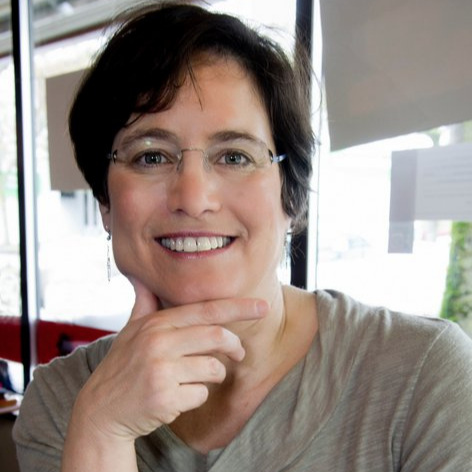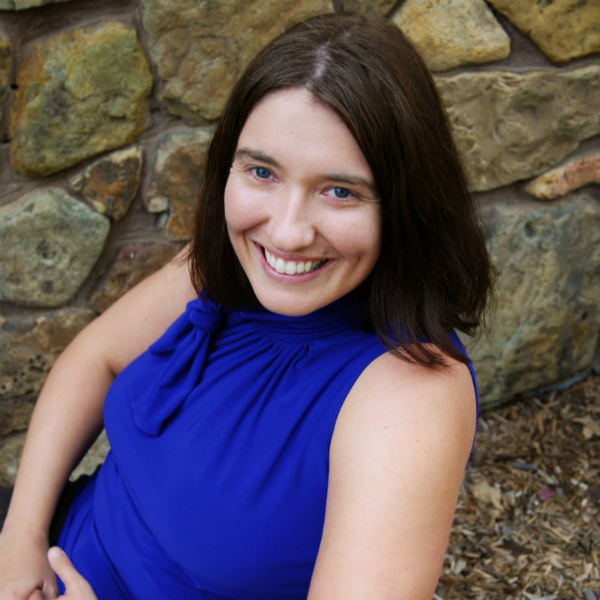ZP: You might recall, when I introduced you at the Poetry Center’s Lighthouse Reading back in October, there was a problem with the sound system and the signal from our podium mic came out sounding super distorted and echo-y on the audience end. I kind of regretted putting together such a stupidly verbose intro as soon as that started, but the joke afterwards was how that kind of noisy, awkward intro was actually pretty fitting, and probably what Khaïr-Eddine would have wanted for his own work in the end. I wonder if we could revisit that notion a little. What is it about noise, distortion, maybe even the edge of understandability, that seems particularly applicable to Mohammed Khaïr-Eddine? I’m tempted also to make some connections between things like signal breakdown, clarity, authority (or lack thereof), and the process and politics of literary translation, but I’m curious whether this sparks any ideas for you, and if it does, how it all might relate back to Khaïr-Eddine’s work, his life, and then your own process and experience of bringing Scorpionic Sun into English.
CB: For what it’s worth, Zach, I thought your intro was super generous and sharp, and wouldn’t want it cut down at all, no matter what the A/V system was trying to say. It was fitting, though, you’re right, that this act of contextualizing Khaïr’s work was deranged by its means of broadcast. Like it was insisting on being an experience and not a subject.
But so you point at a lot of great avenues that radiate off this question which we could wander down (the one about authority in translation beckons to me in particular) but I think it’s worth talking about Khaïr’s work before we talk about my translating, and how distortion operates in it. Because it’s always been a key feature to me, and one of the major achievements of his poems, which always seem to be very successful in resisting apprehension. This has political and economic implications (you can’t imprison or commodify what you can’t catch), and though Khaïr was a co-founder of the Souffles magazine, which was an avant-garde advocate for decolonization in all forms, the reasons for this slipperiness run even deeper than these temporal ones. There’s no denying Khaïr’s political chops (he lived in exile for over a dozen years) but his poems abjure easy comprehension because he saw language as a kind of adversary (he described his composition method as ‘a linguistic guerrilla war’ which I love—poet as insurgent taking potshots against the lumbering forces of language). The sinuousness of Khaïr’s poems is a strategy for eluding not just bourgeois and totalitarian bullshit but also the traps and pitfalls of language and—especially—its prior uses. So, for me, often what’s being communicated in a Khaïr poem is this struggle of the poet to be equal to the language, as much as the narrative, lyrical, iconographic content of the poem itself. It’s audacious—and impossible—but, considering the political implications (that language is a tool for oppression and it bears the residue of its complicity with it), it’s essential. And the goal, like in all good poems in my opinion, is to refresh the language; you can see this in the vast range of registers Khaïr gathers and deploys—he’s a collector, he loves language and the possibilities of precision and smoke. But the stakes are really high, and the language needs to be refreshed in the same way the tree of liberty is refreshed—with blood. And so their feet are always moving, their idioms being taken apart and reassembled, their victims and villains swapping places. They’re trying to surprise their opponent—language—as much as themselves.
ZP: Yeah, wow. That’s great. I love this answer. That idea of rattling so fundamentally against language reminds me of the moment in Pierre Joris’s intro to your translation of Scorpionic Sun, where he quotes Khaïr-Eddine’s idea that “the true writer is always a stranger to the language in which he expresses himself” (ix). I also can’t help noticing how the vocabulary of warfare (or perhaps battle, becoming struggle in the abstract) seems required when discussing Khaïr-Eddine. The poetics are the politics and vice versa. Given the importance of that overlap, and the ever-present need (or want) to contextualize MKE in a particular political-aesthetic space in order to amplify or ensure his resonance (to be a proper steward to the work), I wonder what challenges you encountered as a translator. Obviously not everything can carry over, but in this case it seems hard to even begin. How did you become fixed on this project, what was your process like, and how did concerns with authority and context inform decisions at the levels of process and language?
CB: In terms of the lexicon of warfare—or better yet, insurgency, maybe? He invokes this in “Black Nausea” and “Exile”—yeah, it’s really tough to think of other frameworks for understanding the fierce aggression that is at the heart of this and all his work. This was part of what drew me to the work in the first place: its sheer ferocity. I’d been looking through various anthologies of francophone poetry and a couple of his poems reached out and seized me by the ears. I hadn’t seen anything like this before in the annals of francophone lit, nor was I super well-versed in stateside stuff that operated this way either. It felt like an awesome hybrid of Lorca and Baraka and instructed by Fanon and Césaire. As I started in on the project, I came to understand just how little I understood about what was going on in the poems. At first, I was worried—what the hell was I doing? Would other readers resonate with this if they couldn’t ‘get it’? And why should I—a cishet middle class white dude from the US, with only a few months of Morocco experience to his name—be the one doing this? At the intersection of these feelings was the practice I chose to try to follow as best I could: try to honor the poems as visceral documents as much as English and my grasp of it and French allowed. No doubt there are some interesting experimental approaches to translating a work like this, but when the source text is motivated so much by the marginalizing and lethal effects of colonialism, I didn’t want my translation process to reproduce this marginalization, even incidentally. There were times when I had to resist domesticating or explaining elements in the poems, or particular puns or turns of phrase, but in these moments of doubt I’d look back to a few things: the reader is smart; this translation should be an invitation to others to translate as well or investigate the source text in their own way; and that what I found to be most important in the text was momentum, sonic impact, and its ambiguities—if I’m not altering the source text in the service of communicating one of those three, then I should not be altering it.
ZP: That last point has to be a smart rule for translation in general. Keeping it in mind, it seems like another potential area for translational slippage or de-fanging would be form. I think of the way MKE uses the page in poems like “Barrage” and “Manifesto”, changing up lineation schema and shape, often quite erratically, and how crucial this sense of the poem teetering just on the edge of control is to our understanding of the work, how it hits us. Since translation occurs in such a controlled process—does it?—there’s maybe an additional obstacle (or even paradox) for the translator approaching work that shirks control formally as well as lyrically. And in a more basic way, French just takes up space differently than English. I wonder if any of these factors presented challenges for you when it came to setting MKE down on paper, and if there were moments at the crux of lyric and form where you could just feel him flipping you off from the great beyond. Did you struggle with these forms at all?
CB: Oh yeah you’re absolutely right in bringing up that point. And it preoccupied me quite a bit—I was diligent to the point of obsequious in trying to preserve the general visual impression of the poems. This came out of a lot of what I said above, but also from the sense that these poems emerged spontaneously, in sustained bursts of improvisation, so the choices in visual form seemed to me one of the few areas where we could see Khaïr trying, if not to tame, then to order, the torrents springing from his mind. They felt like a rare site where we could see Khaïr, in a book of headlong velocity, keeping a pace. I’m lucky to be working in English, which, true, doesn’t always have the same economy as French (which did here and there present issues, especially when it came to reflexive verbs and the formal versus informal you), but the alphabet is the same and the syntax is similar so it didn’t present an inordinate challenge to keep things in generally the same shape and ratio. The trim size of the original books did make it difficult, though, to perceive in poems like “Black Nausea” where Khaïr and where the margin broke the line; I’ll confess that I didn’t try to nail down which was which, and stuck with what went where in the original, even though the trim size on the translation allows for longer lines. If there were any significant difficulties of note, formally speaking, it would be whether to add some visual breathing space among the big prose chunks in the longer poems, like “Gennevilliers” and “Manifesto” (we went with no, since the airlessness seemed part of the aggressive point), and how to reproduce rhyme in “Annigator,” which is one of the few love poems in the book, and which shows Khaïr refining his raw material so it fits rhymingly into a smaller space—something I’ve been contending with a lot more as I’ve been working on one of his later books, Resurrection des fleurs sauvages, which is replete with these smaller, more meticulously arranged, formally stricter poems.
ZP: I’m also interested in getting back to that idea about authority, if we can, and maybe it’s possible from here, because I think the question of who gets to translate who is a really serious one (one that is continually being processed in the literary world) which is actually being advanced in a critical sense with the publication of this book. When you acknowledge your own authorial background and make plain the inherent limitations of that perspective—limitations you may not even be fully aware of; perspective being demarcated by linguistics as much as economics, nationality, race, gender, etc.—that would seem like part of the work. Another part would be, well, the work itself. But what else do you feel is involved in being able to take on a translation project of this sort in good faith? Like, I’m a cishet white dude too. I’m interested in translation, but I have trouble with the idea that everything should just be available to everybody. And of course we got a little vacuum going now (“lit bois talk translation ethics” is probably a podcast that can be flung down a well) and at a certain point the answer is just “go ask someone who doesn’t look like you”, but I am very curious about your thoughts on this, and how these types of questions came up or were addressed in the process of making this book.
CB: This question, about how to take on a translation project in good faith, especially one that emerges from vastly different subject positions and conditions than those of the translator, it’s one I think about often. I also wonder how much things should be just available to people, and how much of it should be pre-digested for them. Like, shouldn’t people go out on their own and engage with these works on the work’s terms? That’s an ideal world, but the one we’ve got is one where people need some sense of what’s out there if not coaxing, though, so it does have to come to them (in somewhat Schleiermacherian terms). In some ways, I’ve framed this issue of how to present a translation in my head as existing on a spectrum, with the erotic on one end, the didactic on the other. When I say erotic I mean in full and unmediated sensuousness—the translated text unencumbered by interpretive apparatus, so the reader can experience it as an aesthetic and sensory event. And by didactic, I mean with as much interpretive apparatus as possible (I think of Nabokov’s translation of Eugene Onegin, burdened with glosses on prosody and historical context and other things not communicated by the text, but ambient if not performed by the source text in the original language). Obviously, every translation has to exist somewhere between these two poles, since translation is interpretation, and since one can’t fully convey the sense of the original in the original language in its original context—temporally, politically, socioculturally, aesthetically, etc.—without some recourse to framing. But I think we can both agree that in that framing is the danger of minimizing or canonizing—somehow simplifying the raw and wild text as an artifact of a time and place. And I balk at that. I want people who encounter this text to be wowed and nonplussed by it in all of its torrential fury. At the same time, though, I want them to be as informed as possible about who this work is responding to/in conversation with. I want to immerse them in historical context before they even pass the title page.
Of course, I’ll get both wrong in some way, due to personal dead angles built in by my particular conditioning. And it’s likely that I’ll get things wrong because of my privilege, among other things. So the hope then, is to see this translation as an invitation—to others to translate it and to readers to discover it in their own way. I try to position it this way when I talk about it, but also to perform the translation such that it is recognizably a translation from a different time and place than the culture that’s receiving it, through syntax, diction, leaving references in the text unobstructed and unexplained (except here and there in the glossary) so the reader is reminded that this wasn’t initially for them, and that if they’re going to receive it in the way it was delivered, they’re going to have to work alongside me to research themselves into that mindset, if not begin their own translated version of it. Because there’s nothing wrong with multiple versions (the anti-capitalist and anti-hegemonic benefits of which Johannes Göransson does a great job elaborating in his book Transgressive Circulation), and the process of producing them is such a pleasure, if not an homage (cf. Kate Briggs in This Little Art).
Mohammed Khaïr-Eddine (1941–1995) was an Amazigh Moroccan poet and writer. In the 1960s, he established the Poésie Toute movement and co-founded the avant-garde journal Souffles. He authored many novels and collections of poetry, among them Agadir, Soleil Arachnide, Ce Maroc!, and Legende et vie d’Agoun’chich. Scorpionic Sun is the first book-length translation of his work into English.
Conor Bracken is a poet and translator whose work has appeared in the Adroit Journal, At Length, Colorado Review, Diode, Indiana Review, the New Yorker, and elsewhere. His chapbook Henry Kissinger, Mon Amour (Bull City Press, 2017), was selected by Diane Seuss as winner of the 2017 Frost Place Chapbook Competition. Recent translations include Mohammed Khaïr-Eddine’s Scorpionic Sun (CSU Poetry Center, 2019). He is an assistant professor of English at the University of Findlay.
Zach Peckham is a writer and musician from Massachusetts who left his marketing job to study poetry in Cleveland, Ohio. He is a candidate in the NEOMFA and works at the Cleveland State University Poetry Center.




















![anne13[1] copy.jpg](https://images.squarespace-cdn.com/content/v1/545a9571e4b091e613f3827e/1530058658709-OYFNEWY36O6T4NL4O1N9/anne13%5B1%5D+copy.jpg)







